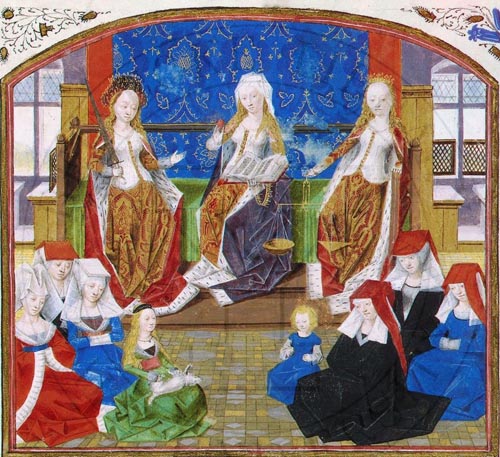
Girls’ education. The Treasure of the City of Ladies (also known as The Book of the Three Virtues, and A Medieval Woman’s Mirror of Honor), by Christine de Pizan. Miniature c. 1475. Beinecke Library, Yale University, New Haven.
Christine de Pizan was a court writer in Paris in the early 15th century. Much of her writing was illustrated. She sought to educate and provide counseling to women of the Renaissance through her treatises on the female life through all social statuses. Writings of this nature were generally written by men for men on how to control the women in their lives. For that reason alone, de Pizan’s writings can be considered to be a step forward for women.
She was an advocate for the education of women, which comes through in the many illustrations about her writings. The illustration in question, although created after Pizan’s time, is representative of the education she sought to bring about. This miniature from the Beinecke LIbrary is more opulent in style than what Pizan originally stood for; but since it was created after the author’s death, then creative liberties would have been taken. This is likely to please the patron rather than to reflect on the original direction of the author.
In this miniature, a group of women of varying ages are sitting on the floor, with three other women sitting in chairs that positioned above them in the picture plane. Perhaps all three are teachers, with the center one reading from a book and the women on either side demonstrating the lesson with a sword and balance scale, respectively. These are two items generally held by Lady Justice, which can be traced back to before Isis in Ancient Egypt. In this particular illustration, these items more than likely stand for reason and justice as the book is about women using their influence for peacemaking.
All of the women have very similar features with the typical long blonde hair fashion, unless it is covered by a head piece. They are heavily clothed and seem to all be of the same upper class status.
